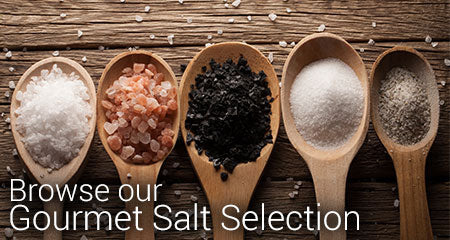Diets, Food, Weight-Loss and EVOO - Blog #11

Hi Everybody! Welcome to another Friday blog! I hope you are beginning to see and experience some of the wonderful effects of EVOO! I had a question concerning drinking your EVOO with fresh lemon juice while taking the prescription protonix for acid reflux. If you are on this medication, omit the lemon juice as it has the same pH as your stomach and can irritate your esophagus. Try drinking it with another 100% organic juice you like, such as tart cherry, pear, beet or a blended juice. Protonix irreversibly binds to the pumps that produce stomach acid. Your body literally has to make new pumps to produce stomach acid in order to break down your food. Food that hasn’t been broken down enough causes tearing in the intestinal lining, inflammation, poor absorption of nutrients and vitamins creating havoc in the gut. Stomach acid is also an important part of your immune system in that it kills harmful bacteria and viruses that can make you sick (such as pneumonia or flu). Work on healing your esophagus (#EVOO) and getting off this medication with the help of your MD.
Today I want to look at some of the top diets, food, weight-loss and how EVOO can help us achieve our ideal weight, eliminating fat around our organs and body. This blog is a bit long, but there’s so much good info. Stay with me!!!
Who isn’t trying to drop a few pounds? Many of us have tacked on a few pounds over the course of the first few months of this pandemic. There are many reasons for this from well...being home more, eating more, stressing more, staying inside more, drinking more, exercising less... Let’s face it, life can be challenging at times. Many of us need a little help getting those pounds off and turn to weight loss programs and diets. First, let’s look at 2020’s best diet overall (according to U.S. News & World Report). Diets were rated on being “relatively easy to follow, nutritious, safe, effective for weight loss and protective against diabetes and heart disease.” I’ve listed the top 5 (there were some ties) and added some other popular diets as well.
#1. Mediterranean Diet - Ranked number one for the third year in a row as the best diet overall - sensible eating with emphasis on fresh fruits and vegetables, olive oil, fish and whole grains. Safe, nutritionally complete, supports heart health, cardiovascular health, brain health and prevents diabetes. This diet is low in red meat, sugar and saturated fat with high consumption of EVOO. Mediterranean cuisine’s 3 core food plants: Olives, wheat and grapes.
#2. DASH (tie) - Dietary approaches to stop hypertension (high blood pressure). - nutritionally complete, safe, supports heart health and prevents diabetes. You’re focus is on fruits, vegetables, whole grains, low-fat dairy and legumes, cutting out a good bit of sodium, avoiding red meat and tropical oils.
#2. Flexitarian (tie) - “emphasizes fruits, veggies, whole grains and plant-based protein.” This is a realistic modified-vegetarian diet geared toward lowering your risk of disease and extending one’s life, while accommodating everyone’s eating preferences. You pretty much eat vegetarian, but it’s totally okay to have a cheeseburger now an again.
#4 WW (weight watchers) “focused on inspiring healthy living and improving overall well-being.” This is a supportive holistic multi-model approach to eating and living designed specifically for you and your family. It is based on WW’s “SmartPoints system, which assigns every food and beverage a point value, based on its nutrition, and leverages details about food preferences and lifestyle to match each member to one of three comprehensive ways to follow the program.” They offer in-person workshops, online chat and phone conferencing.
#5 Mayo Clinic Diet (tie)- This diet uses a food pyramid emphasizing fruits, vegetables, whole grains with lower density, therefore taking in fewer calories. It is a ‘spin’ on the old standard pyramid diet, but with emphasis on preventing and treating type 2 diabetes and lowering blood sugar. You have help from the clinic to lose #1-2 per week until you reach your goal weight.
#5 Volumetrics Diet (tie) - This an approach to eating that divides foods into 4 categories of food density and teaches you how many of each you can have per day. You can eat whatever you like by trading out certain numbers of one category for another of lower density, maybe allowing one to have a more amazing desert later? The focus is adhering to very low density and low density foods.
#5 MIND Diet (tie) - [Mediterranean-DASH Intervention for Neurodegenerative Delay] - this diet is based on a scientific approach geared toward preventing mental decline. It is taking specific foods that affect brain health from the Mediterranean and DASH Diets. A study in 2015 demonstrated reduction in Alzheimer’s risk up to 53% for those who adhere to it. You eat 3 servings of whole grains, a vegetable and salad. Twice per week you eat chicken and 1/2 c (blue)berrries, 1 glass wine (some alcohol is better than none for brain health), you eat fish at least once per week and snack on nuts, but have 1/2 c beans every other day and use olive oil as a fat.
Here are a few other popular diets:
Vegan Diet - This diet excludes all animal products including cheese, diary, eggs and focuses on legumes, seeds, fruits, vegetables, leafy greens and whole grains. It is important to get enough nutrients with this diet and it can be time consuming. The focus is to consume 6 servings of whole grains, 5 servings of legumes, nuts, tofu or some other protein and a plant based milk of some kind, 4 servings of veggies, 2 servings of fruit and fat such as sesame oil, avacado or coconut oil. You can also eat desert on this diet, as long as there are no eggs, milk or other animal products in it.
Jenny Craig Diet - This is a guided approach where a consultant teaches you how to manage calories, fat and portions. They offer a weight loss option and a type 2 (for diabetics) program. They also emphasize active lifestyle choices to manage weight. The upside is meals are prepackaged and delivered. The downside is there are little home meal choices or eating out choices.
South Beach Diet - Focus is on choosing the best fats and carbs, including Low glycemic fruits and vegetables, fish, eggs, full-fat dairy, very lean protein, whole grains and nuts. Ranked #18 on best diet overall list. This is a low carb diet with a focus on weight loss without hunger and geared toward heart health.
Keto Diet - high fat diet - emphasizes weight loss through fat burning, putting your body into a state of ‘ketosis’ by eliminating nearly all carbs from the diet (net about 20). The American Medical Association noted improvement in insulin sensitivity and blood sugar for diabetic management, but a year later in 2019 stated “enthusiasm outpaces evidence.” However, many diets are adopting some of the keto components.
Okay. How in the world do you know which diet is right for you? Let’s talk a bit about food. It has been well-established that the high intake of processed meat, pre-packaged foods, fried foods, high sugar drinks, candy and sweets, high fructose corn syrup, along with low intake of fruits, vegetables, whole grain, fish, nuts, seeds and EVOO typical of the western diet causes INFLAMMATION!! By now we know that inflammation leads to obesity, diabetes type 2, cardiovascular problems, neurological problems and a myriad of other health conditions related to it.
Carbohydrates have gotten a bad reputation of late here in the U.S. and gluten intolerance and celiac disease is on the rise. More people than ever are avoiding breads and pastas...and ‘carbs’ in general. “By 2014, in the United States alone, an estimated 3 million people without celiac disease swore off gluten.” NCGS (nonceliac gluten sensitive) individuals feel there is an immune response to something in the wheat. Others believe certain carbohydrates called fermentable oligosaccharides, disaccharides, monosaccharides, and polyols (FODMAPs) ferment in the gut causing bloating and discomfort. Also, there appears to be a genetic predisposition in individuals with celiac disease to a component of gluten called gliadin, which penetrates the intestinal lining and sets off a destructive inflammatory response. People with a true wheat allergy will produce IgEs (see Blog #7 on the Immune System) causing itching, vomiting and shortness of breath.
Doctors were puzzled about people who had symptoms including bloating, diarrhea, abdominal pain, headaches, fatigue, joint pain and rashes, but did not produce IgEs (meaning they did not have a wheat allergy). Further, these symptoms disappeared when they removed gluten from their diets. In 2012 a team at Harvard Medical School in Boston proposed that a group of proteins called amylase trypsin inhibitors could be the potential culprit due to provocation of these proteins on immune cells. Another study in the same year showed that gluten itself was not causing the disease, “but the finding hinted that the barrier of those patient's intestines might be defective, allowing partially digested gluten to get out of the gut and interact with immune cells in the blood.” This perforation also allowed immune response-provoking bacteria to escape as well. To further complicate things, fermenting undigested compounds cause symptoms of IBS (irritable bowel syndrome), gas, bloating and abdominal pain. Remember from last week’s blog on the gastrointestinal system how important it is to replenish the good flora and heal your gut’s lining with EVOO?
High consumption of EVOO may be one component of gluten tolerance throughout the Mediterranean. Another may also be the genetic varietal of wheat that lessens the fermenting compounds damaging the intestines. In the U.S., approximately 60% is hard red wheat variety, whereas in Europe, it is generally soft variety. Hard wheat has more gluten and is a stronger gluten than in the soft variety, which is more easily broken down during digestion.
For those of you with ‘gluten sensitivity’, it may also be related to the pesticides (such as Roundup) sprayed on the wheat, barley or rye causing the ‘allergic reaction, rather than the grain itself. “Since the introduction of glyphosate-based herbicides, like Roundup, by Monsanto in the 1970’s, celiac disease levels have increased 400%.” Glyphosate is a biocide used before planting on traditional crops and after planting on GMO crops. It is also used for pre-harvest desiccation and as a “harvest aid” on traditional crops. It degrades to a very toxic AMPA, contaminating soil and water, destroying good microbes, adhering to clay and organic matter, ultimately ending up in the ocean, “where it is highly persistent.” It is primarily produced in China, where very little is known or publicly available about residues in the environment. There is widespread use in China. Residues have been found in 60-80% of the general public in U.S., compared to 44% in Europe. It inhibits antioxidant enzyme activities, while inducing the accumulation of ROS (reactive oxygen species) causing cell damage and physiological dysfunction!!! OMG!! It has been detected in bottled water, beer and wine due to run-off into rivers and bodies of water!!! Some of the highest detectable levels are found in breakfast cereals containing oats due to pre-harvest spraying. Chronic low doses of glyphosate are associated with various forms of cancer, non-alcoholic fatty liver, kidney damage, mental conditions, ADHD, autism, Alzheimer’s and Parkinson’s diseases. In human blood cells, exposure resulted in DNA damage and decreased DNA methylation, important in controlling proliferation of cancer cells and pre-programmed cell death. It interferes with an enzyme that breaks down acetylcholine (neurotransmitter), causing abnormal neurological conditions. In pigs, exposure increases infertility and malformation in the liver and kidneys. Chronic exposure from ultra low doses in drinking water resulted in tumors, oxidative stress, depressive behavior, kidney and liver damage in lab rats. It has disastrous effects on plants and microorganisms. It is now also being linked to resistance of bacteria to antibiotics. Two researchers addressed this in the journal Interdisciplinary Toxicology arguing that “glyphosate [Roundup]...is the most important causal factor in this epidemic.” They looked at fish exposed to glyphosate and noted development of digestive issues very much like celiac disease. They also noted impairment of particular enzymes used in processing vitamin D, which is frequently low in people with celiac disease. People with celiac disease also have increased risk to non-Hodgkin’s lymphoma, infertility, miscarriages and birth defects also implicated in glyphosate exposure. There’s much more to read about here. Very scary. You think avoiding GMO products and eating organic isn’t important? Understand that these chemicals annihilate your good bacteria living in your colon. These microbes eat fiber and produce vitamins and butyrate (short chain fatty acid) that helps to repair the lining of your intestine. We rely on our gut’s microbes to make this fatty acid. By eating a high fiber diet, replenishing your gut microbiome and consuming EVOO, you can literally fix your gut health, which in turn affects everything else.
Italy banned the use of glyphosate in 2017. Before that they did not allow use as a pre-harvest treatment and placed restrictions on use. Many other countries are following suit. In spite of all the evidence, the U.S. still thinks it’s a good idea to use glyphosate (Roundup). The EPA still tries to say it’s “not likely to be carcinogenic to humans,” even when some states like California disagree. Hmmm...makes one wonder how much money is involved between Monsanto and those involved. “There is no systematic monitoring of glyphosate levels in foods by any government agency.” Also, “documents suggest that a former senior employee a the US Environmental Protection Agency worked with the company to suppress an investigation of glyphosate’s health risks by another regulatory agency.” Currently, Monsanto has 42,000 lawsuits pending and has paid over $2 billion in verdicts. You want to get to the bottom of things, just follow the money.
**It’s worth it to try some imported Italian whole-grain pasta. Many people don’t have the same reaction when eating bread and pasta in Italy and Greece that they experience here in the U.S. Also, they don’t allow GMOs in Europe.**
Let’s face it, there are innumerable diets out there from Keto to Atkins that limit carbohydrates in an attempt to force our bodies to burn a different fuel. Now, understand there are 3 types of fuel the body can use: carbohydrates, proteins and fats. It costs the body energy to digest and absorb food. Protein takes the most energy, costing 20-30% of total calories used to digest it. Carbohydrates are next, costing 5-10%, then fats at 0-3%. The fuel of choice is carbohydrates, due to the brain’s constant requirement for glucose. However, there are several studies out there that are looking at how the brain uses ketones. Processed foods take less energy to digest than whole foods, which require much more energy to break down. If your goal is weight-loss, eating whole grains and whole foods net way fewer calories, not to mention all the improved health benefits. When you remove most of the carbohydrates from your diet, your body has no choice but to get fuel from fat or protein (very energy expensive) stealing from muscles and stored fat to function. The problem is balance. When your body doesn’t have the nutrients it needs through the diet, many things can fall out of balance and can lead to toxicity, vitamin deficiency and other problems in the body. The Ketogenic diet (KD), Atkins and low carb diets put your body into ketosis. This is a “metabolic state characterized by elevated levels of ketone bodies in the blood or urine.” Ketone bodies include: acetone, acetoacetate acid and beta-hydroxybutyric acid. In healthy individuals, your body maintains its acid/base homeostasis. Remember the pH scale from last week? In pathological states of complete insulin deficiency (diabetes I, and late stage II), it can lead to Ketoacidosis, which is a medical emergency. Ketoacidosis can also result from chronic alcohol use, salicylate poisoning or isopropyl alcohol ingestion.
Let’s look at the physiology of a keto or low carb diet. Fatty acids and glucose are converted to acetyl coenzyme A (CoA) to enter the citric acid cycle of metabolism. Glycolysis is the process of breaking apart glucose into smaller particles for fuel. This process falls to very low levels with low carbohydrate availability leading to ketogenesis and accumulation of ketones. A recent study in 2019 looked at the ketogenic diet-induced weight loss in obese adults and vitamin D status. “Evidence has shown a strong association between hypovitaminosis D (low vit D) and cardiometabolic diseases, including obesity.” Their study showed that a very low-calorie ketogenic diet (carbs were derived from veggies, fat from olive oil, proteins from fresh meat, fish or eggs) consisting of 5-6 small meals per day produced greater weight loss, improved glucose homeostasis, decreased inflammation, improved vitamin D levels and reduced cardio-metabolic risk (related to vit D levels). Ketones cross the BBB (blood brain barrier) to provide an alternate source of energy for the brain, which we know uses glucose for fuel. While the heart, renal cortex and muscles can easily use ketone bodies for fuel, the brain utilizes ketones only in prolonged starvation. It has been demonstrated that ketone bodies can produce more ATP (adenosine triphosphate), the body’s energy produced by cellular mitochondria than glucose or fatty acids, allowing maintenance of efficient fuel production despite calorie loss. Ketone bodies also help decrease free radical damage and enhances antioxidant capacity and have several therapeutic effects on the central nervous system. The cardiac (heart) muscle prefers free fatty acids (FFAs) as a source of fuel, followed by glucose, ketone bodies, lactate, pyruvate, glycogen and amino acids. Erythrocytes (blood cells) don’t have mitochondria, so are unable to use ketones for fuel. The liver is also unable to utilize ketones due to lacking an enzyme (thiophorase). Ketone build-up can vary between individuals depending on body fat percentage.
Since the keto diet (KD) is severely limiting carbohydrate food sources, many things can go wrong while doing this diet. Researchers recommended the keto diet should be “administered under a controlled environment. Some patients with specific metabolic disorders may have absolute contraindications to start KD.” They also recommended vitamin supplementation with this diet, including calcium, selenium, zinc, vitamin D and oral alkalis to reduce kidney stones, as well as proton pump inhibitors, like protonix (WHAT??) to decrease gastroesophageal reflux. Some mild adverse effects of the keto diet include “headache, constipation, diarrhea, insomnia, and backache” as well as dehydration, hypoglycemia (low blood sugar), and mild acidosis. High levels of medium-chain triglycerides in the keto diet (remember EVOO has long-chain triglycerides) can cause abdominal cramping, discomfort and vomiting. “The moderate adverse effects comprised of dyslipidemia, mineral deficiencies, metabolic acidosis, and increased risk of renal stones.” It can also lead to increased triglycerides within 6 months. “The severe effects are associated with elevated levels of ketones that can lead to complications by increasing redox imbalance and thereby risk of morbidity and mortality in diabetic patients.”
Long-term effects of keto diet on pancreatic endocrine cells in mice caused glucose intolerance, insufficient insulin secretion, insulin resistance and reduced beta and alpha cell mass with increased risk of visceral (organ) and bone-marrow fat, increased leptin, reduced bone mineral density (due to decreased transcription factors promoting osteoblastogenesis), increased cholesterol and inflammation. They also noted hepatic steatosis (fatty liver disease) in keto diet-fed mice after 22 weeks. Remember fatty liver disease affects over 3 million Americans per year. If you have a fatty liver, you may not be able to absorb vitamin A, even if you are eating foods high in vitamin A. Vitamin A stimulates the pituitary gland in the brain, resulting in production of TSH, which increases the size of the hormone and activates receptors in the thyroid. When the thyroid is not working correctly, there may be hair loss, feeling cold and slowed thyroid or even enlarged thyroid due to overproduction of TSH (thyroid stimulating hormone). If you have an intestinal problem due to taking antibiotics for example, you may also need to supplement zinc that is very necessary to convert T4 to T3 (the active thyroid hormone).
Okay. That’s pretty worrisome when you see so many people desperate to lose weight and go on these diets without any supervision or knowledge of potential side effects that could be very detrimental to their health. Let’s look at a more balanced diet. Many are using a modified Keto diet, which adds some much needed high nutritional carbs. Another is the Mediterranean diet. This diet consists of high consumption of EVOO, legumes, vegetables, fruits, fish, and moderate consumption of cheese, yogurt, wine with low consumption of meat products (other than fish). This diet has been shown to reduce risk of “all-cause mortality” in studies.
So, let’s break all this down. There are so many questions when it comes to diet about what to eat and what to avoid. When considering foods, look first at your gastrointestinal health. Most of us could benefit from taking pre and probiotics to help restore gut health, allow for increased absorption of nutrients and to aide in digestion. What about weight-loss? When you drink EVOO first thing in the morning along with your pre/probiotics, this enhances switching to a stored-fat-burning mode. It enhances elimination of excess storage and waste products that is just hanging around. What about organic vs non-organic? Bottom line is pesticides have been demonstrated to harm many body tissues. Does it not make sense to eliminate as many of these toxic chemicals from our diets as possible? Does it also not make sense to eliminate processed foods and simple sugars that lead to inflammation and obesity? Another very important factor when considering what to put in your body is that consuming a high amount of EVOO protects the lining/mucosa of the intestine, enhancing absorption and elimination. A recent study compared the daily intake of 2 tablespoons EVOO to flaxseed oil (rich in omega 3) over a 6 week period. Participants took EVOO for 6 weeks, then took flaxseed oil for 6 weeks. EVOO had greater anti-inflammatory effects, lower LDL (bad cholesterol) as well as lower total cholesterol. Another study looked at EVOO and relationship to bioavailability of carotenoids. Putting EVOO on tomatoes for example, enhanced solubility of carotenoids allowing enhanced uptake in the intestinal tract. The study found that 1/4 teaspoon EVOO per ounce of tomato is enough to enhance this uptake. The Greeks consume about 1/4C per day, compared to the U.S and U.K. at 1/2 teaspoon per day. Ikaria Island in northeastern Greece has long been recognized as one of the places with the highest life expectancy in the world.
Okay! So, looking at diet, common sense always wins out in my book. Your ‘diet’ should be easy and a way of living that makes you feel good, have a sense of well-being, have lots of energy and joy for life!! It is illogical to eliminate carbohydrates from the diet, just like it’s illogical to eliminate fat. It has been well-documented that a low-fat diet causes poor absorption of a host of vitamins and minerals that actually rely on free fatty acids for transport across the intestinal wall. Many health experts recommend a modified keto diet or a Mediterranean diet that includes carbohydrates that come from whole food sources. When you eat a whole food diet, eliminating the simple sugars and processed foods, your body responds in a very positive way. You’ll feel good. A balanced diet of fresh whole foods and grains, lean proteins like fatty fish, nuts and seeds, good fat from EVOO that gives your body all the phytonutrients, vitamins and minerals in the right proportions is key in living a long and healthy life. When you give your body the right nutrients, it will reward you. When you eat bad things for your body, it will definitely let you know through inflammation, pain and disease processes.The Greeks have known how to do this for centuries. Eating this way will help you achieve the ideal body weight and protect organ systems, bone and muscle to prevent inflammation and therefore prevent diseases associated with inflammation.
Next week’s focus is on Thyroid health. Until next time my friends, drink, drizzle, digest your EVOO, eat fatty fish, drink lots of water, especially now that it’s so hot, work on your gastrointestinal health, exercise your body and mind!! Stay focused on your health!! #EVOO
This blog is intended for informational purposes only. Discuss strategies with your Healthcare Practitioner.






